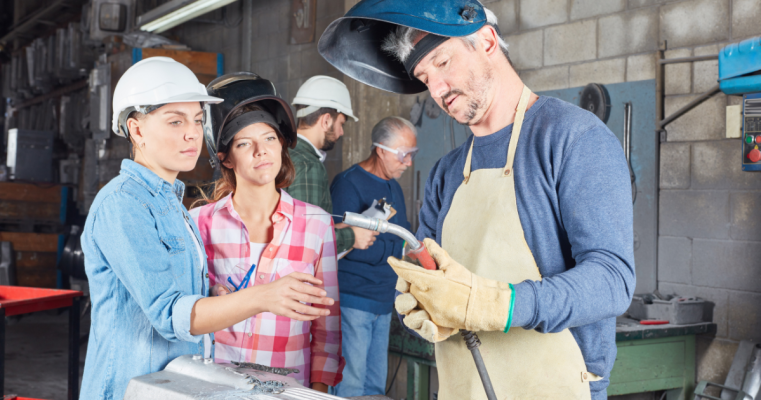Use hand-welding, flame-cutting, hand-soldering, or brazing equipment to weld or join metal components or to fill holes, indentations, or seams of fabricated metal products.
Welders, cutters, solderers, and brazers use hand-held or remotely controlled equipment to join or cut metal parts, or to smooth surfaces. These workers study sketches and specifications to understand the full picture of the structure and materials before they start their work. Welders’ and cutters’ tools use high heat to soften the material. Welders use these tools to join metal in a wide variety of industries, from car racing and manufacturing to steel beam construction. Cutters cut and trim metal objects, or dismantle large objects such as ships and railroad cars. Work may be outdoors on a scaffold or high platform, or indoors in confined areas. Bending, stooping, and heavy lifting are common. Soldering and brazing workers use molten metal to join two pieces of metal. Soldering involves precision tasks such as forming joins in electronic circuit boards, while brazing uses metals at higher temperatures to —for example—apply coatings to parts for protection against wear and corrosion. Other workers in this field manage machines or robots that perform welding, brazing, soldering, or heat treating tasks. These workers may also operate laser cutters or laser-beam machines. Hazards include very hot materials and the intense light created by the arc. While employers are required to provide safely ventilated areas, these workers typically wear safety equipment to prevent injuries. Most positions are full time; evenings, weekends and overtime hours are common. High school education, along with technical and on-the-job training is typically required to enter these fields. A certification or other skill credential is attractive to employers.
If this career path interests you please check out MCTI’s Welding Technology Program. MCTI’s Welding Technology Program is an instructional program that prepares individuals to apply technical knowledge and skills in gas, arc, shielded and non-shielded metal arc, brazing, flame cutting and plastic welding. Hand, semi-automatic and automatic welding processes are also included in the instruction. Students learn safety practices and types and uses of electrodes and welding rods; properties of metals; blueprint reading; electrical principles; welding symbols and mechanical drawing; use of equipment for testing welds by ultrasonic methods and destruction and hardness testing; use of manuals and specification charts; use of portable grinders; positioning and clamping; and welding standards established by the American Welding Society (AWS), American Society of Mechanical Engineers and American Bureau of Ships. The Program is certified by the American Welding Society. The Program consists of a list of PDE required tasks and additional local or value added tasks.
Certification available to qualified students:
American Welding Society Welding Certifications
For information on more career opportunities check out: https://www.careeronestop.org/Videos/CareerVideos/career-videos.aspx
To see if this career is for you:
Career One-Stop:
Youtube:


